As someone who has spent countless hours soaking in the soothing warmth of hot tubs, I understand the allure they hold.
But when it comes to buying one, the question that bubbles up is, "How much do hot tubs cost?"
It's a simple question, yet the answer is as varied as the bubbles in a hot tub jet stream. From inflatable models to luxurious in-ground installations, the cost of a hot tub can be influenced by a multitude of factors.
Size, materials, features, and brand all play a part, not to mention the additional costs of installation, maintenance, and energy usage. But don't let the potential price tag dampen your spirits.
With a bit of savvy shopping and an eye for energy efficiency, owning a hot tub can be more affordable than you might think.
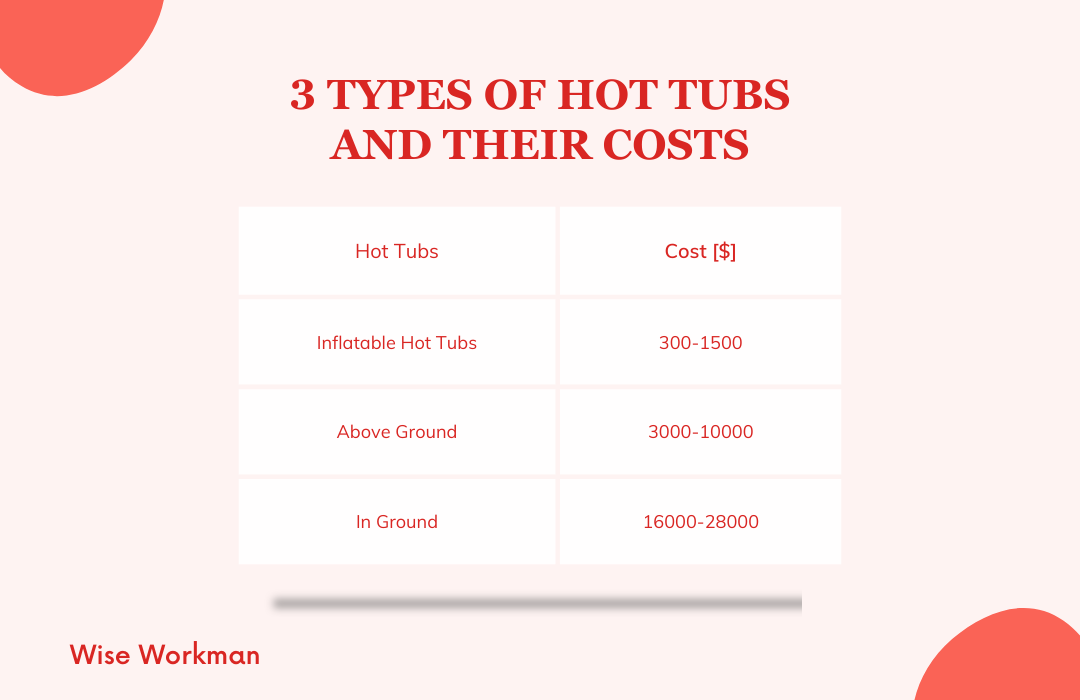
Inflatable hot tubs are a budget-friendly choice for those dipping their toes into the hot tub lifestyle. Easy to set up and move around, they offer the flexibility of location and storage.
However, they are not recommended for use in colder climates and may lack some of the features found in more permanent hot tubs. The water temperature might not reach the same highs as other types, and additional features are often limited.
The cost for inflatable hot tubs typically falls between $300 and $1,500.
Also known as portable or hard-shell hot tubs, above-ground hot tubs provide a more permanent and feature-rich option. They require a solid foundation and come equipped with a variety of extras such as massaging jets, internal heating, built-in speakers, and Wi-Fi connectivity.
These hot tubs are more expensive than their inflatable counterparts, with prices ranging from $3,000 to $10,000 on average.
In-ground hot tubs, typically built adjacent to or as part of an outdoor swimming pool, offer a high level of customization. They are often custom-made and may require a building permit. These hot tubs can add significant value to your home but come with a higher price tag.
The cost of in-ground hot tubs usually ranges between $16,000 and $28,000.
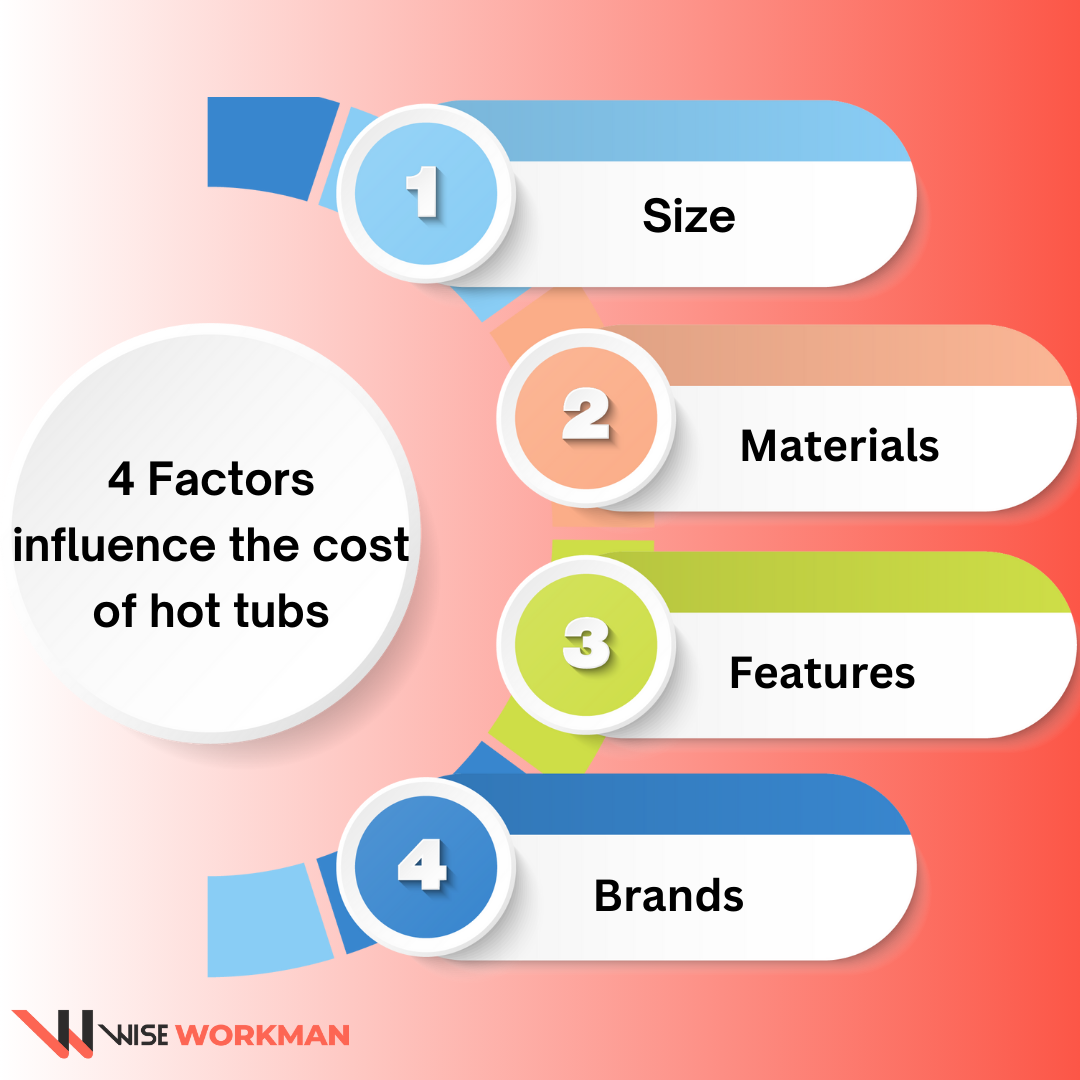
The size of the hot tub can significantly influence its cost. Larger hot tubs require more construction materials, more water to fill, and more energy to heat the water, all of which contribute to a higher price.
For example, a swim-spa combo hot tub, which is larger than other types to accommodate swimming and exercising, can cost between $10,000 and $35,000 on average.
The materials used in the construction of the hot tub also play a significant role in its cost. For instance, acrylic hot tubs, which are popular due to their durability and versatility, can cost around $3,795 to $20,000 and more.
Wooden hot tubs, which offer an aesthetically pleasing look and various heating options, can cost between $3,000 and $10,000 on average.
The features of the hot tub can also influence its cost. Hot tubs with extras such as massaging jets, internal heating, built-in speakers, and Wi-Fi connectivity are typically more expensive. For instance, hard-shell hot tubs that come with a wide variety of extras can cost between $3,000 and $10,000 on average.
The brand of the hot tub can also impact its cost. High-end brands that are known for their quality, durability, and innovative features tend to be more expensive than lesser-known or budget brands.
It's important to research and compare different brands to ensure you're getting good value for your money.
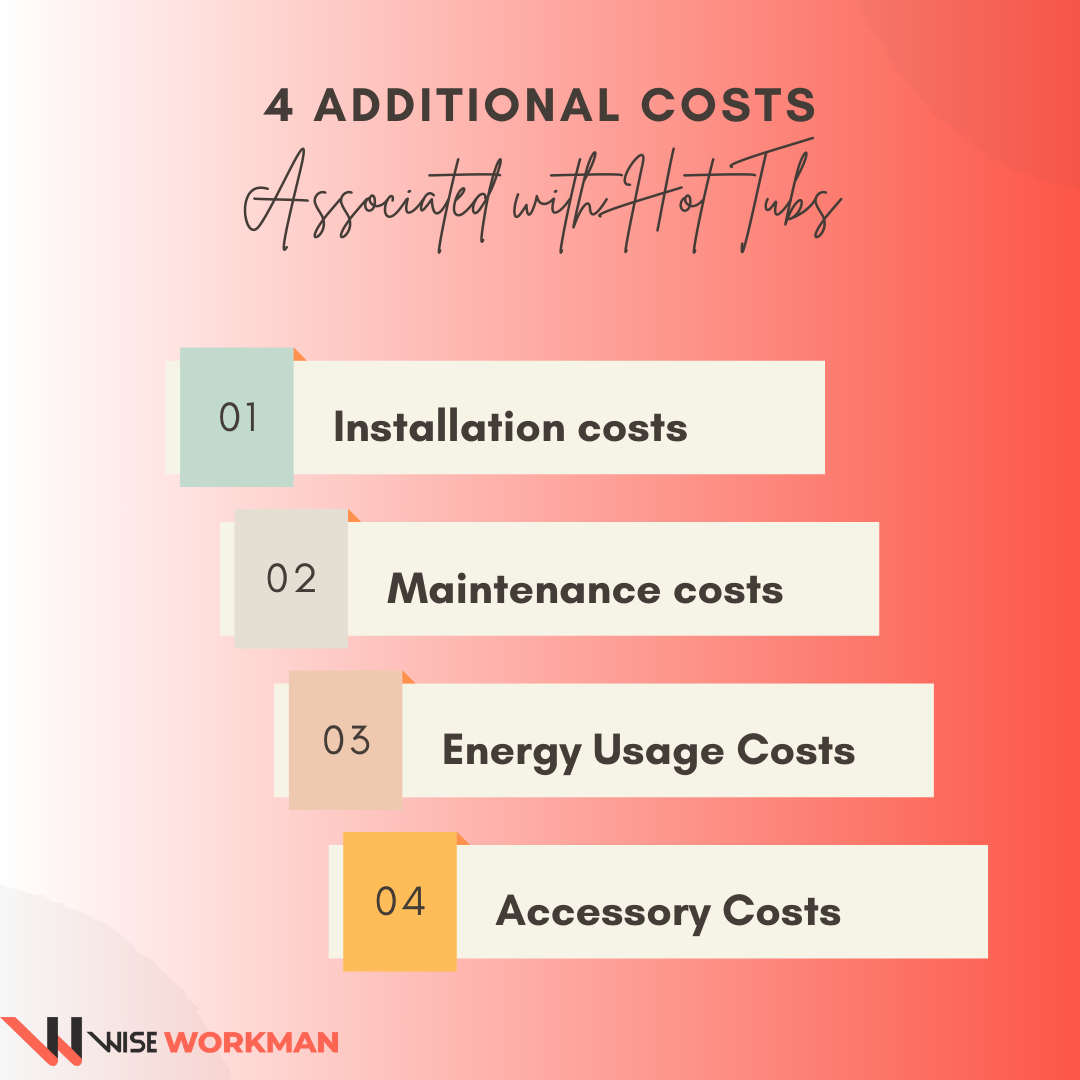
When it comes to hot tubs, the initial purchase price is just the beginning. Installation costs can add a significant amount to your overall expenditure. These costs can vary widely depending on the type of hot tub you choose and the complexity of the installation.
For instance, in-ground hot tubs require excavation, which can be quite costly. On the other hand, inflatable and above-ground hot tubs are generally less expensive to install, often only requiring a flat, stable surface and access to electricity.
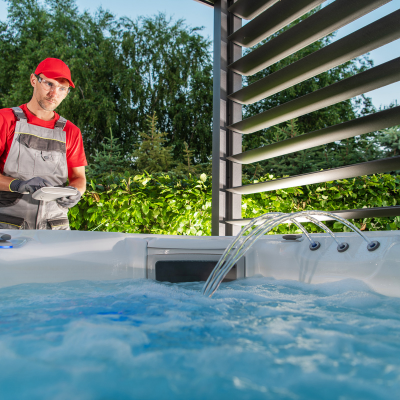
Maintenance is a crucial aspect of hot tub ownership that can influence the overall cost.
Regular servicing and maintenance, which includes cleaning the tub, checking and adjusting the water chemistry, and inspecting the equipment for any potential issues, are essential to keep your hot tub in good working condition.
Depending on the level of service you choose, maintenance costs can range from $150 to $300 per year.
Energy usage is another significant cost associated with owning a hot tub. The most energy-efficient hot tubs on the market will cost between $1.00 and $1.30 per day at current energy tariffs of around 28p per kWh.
However, this can vary depending on several factors, including the size and model of your hot tub, the ambient temperature outside, how often and how long you use your hot tub, and your electricity tariff.
Accessories for your hot tub, such as covers, steps, and cleaning tools, can also add to the overall cost. While some of these items are optional, others, like a good-quality cover, are essential for maintaining the efficiency of your hot tub and keeping your energy costs down.
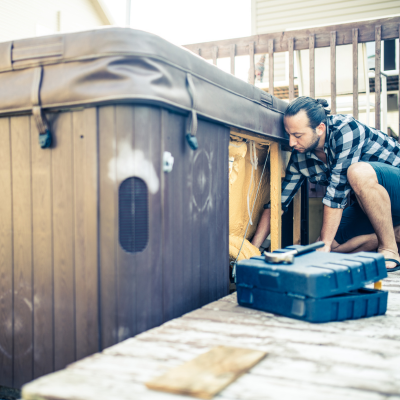
The installation process for a hot tub can be quite involved, especially for in-ground models. It typically includes site preparation, delivery and placement of the hot tub, electrical wiring, and filling and testing of the tub.
The cost of this process can vary widely depending on the type of hot tub and the specifics of your site, but it's an important factor to consider when budgeting for a hot tub.
Energy efficiency is a key factor in the ongoing cost of a hot tub. More efficient models will use less energy to heat and maintain the water temperature, resulting in lower energy costs.
Factors that can affect a hot tub's energy efficiency include the quality of its insulation, the efficiency of its heater, and the fit and insulation value of its cover. By choosing a model with good energy efficiency features, you can significantly reduce your hot tub's running costs.
Luxury hot tubs are the epitome of relaxation and indulgence. They are designed with high-end features that elevate the hot tub experience to a whole new level.
Some of the common features you can expect in a luxury hot tub include advanced hydrotherapy jets for a superior massage experience, ergonomic seating for ultimate comfort, and state-of-the-art control systems for easy operation.
Some luxury models also come with mood-enhancing LED lighting, built-in sound systems for entertainment, and water purification systems for crystal-clear water. These features not only enhance the comfort and enjoyment of the hot tub but also contribute to its overall performance and efficiency.
When it comes to luxury hot tubs, the cost can vary significantly depending on the features, size, and brand. On average, you can expect to pay anywhere from $8,000 to over $20,000 for a luxury hot tub.
While this might seem like a hefty investment, it's important to remember that a luxury hot tub offers superior quality, performance, and longevity, which can provide value for money in the long run.
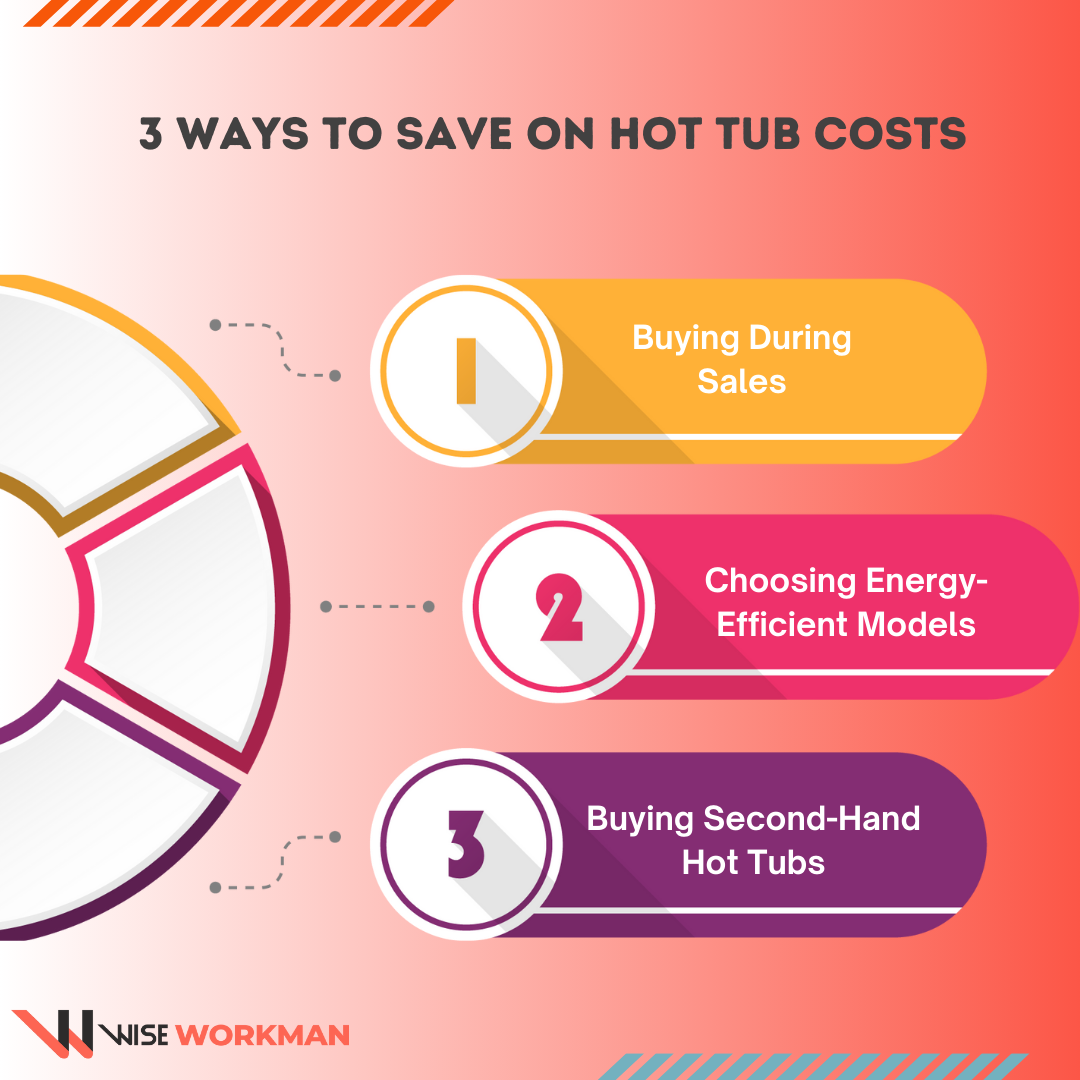
One of the best ways to save on hot tub costs is to buy during a sale. Retailers often offer significant discounts during certain times of the year, such as end-of-season sales, Black Friday, or Boxing Day sales.
By taking advantage of these sales, you can potentially save hundreds or even thousands of Dollars on your hot tub purchase.
Choosing an energy-efficient model is another effective way to save money over time. Energy-efficient hot tubs are designed with features like high-quality insulation, energy-saving modes, and efficient heating systems, which can significantly reduce the amount of energy the hot tub uses.
While these models might cost a bit more upfront, the savings in energy costs over time can make them a more economical choice in the long run.
Buying a second-hand hot tub is another option to consider if you're looking to save money. Second-hand hot tubs can be a great deal, especially if they're in good condition and have been well-maintained.
However, it's important to thoroughly inspect the hot tub before purchasing and to ask the seller about its history and condition. It's also recommended to buy from a reputable dealer who can provide a warranty for peace of mind.
Yes, using a hot tub in winter requires some special considerations. For instance, you'll need to ensure that your hot tub is well-insulated to maintain the water temperature efficiently. It's also important to keep the hot tub covered when not in use to prevent heat loss and protect it from snow and ice. Regularly checking the water chemistry is also crucial as cold weather can affect the pH balance of the water.
As a general rule, you should change the water in your hot tub every three to four months. However, this can vary depending on how often you use your hot tub and the number of users. Regularly testing the water and maintaining the right chemical balance can help keep the water clean and safe for longer periods.
Yes, you can install a hot tub indoors, but there are several factors to consider. You'll need a room with good ventilation to prevent moisture build-up, a strong foundation to support the weight of the hot tub, and access to water and electricity. It's also important to consider the size of the hot tub and ensure there's enough space for installation and maintenance.
Some common hot tub accessories include a cover to maintain water temperature and keep out debris, steps for easy access, a handrail for safety, and a spa vacuum for cleaning. You might also consider a spa caddy or tray for holding drinks and snacks, and waterproof playing cards or board games for entertainment.
There are several ways to make your hot tub more energy-efficient. Using a good-quality cover can help maintain water temperature and reduce heating costs. Regular maintenance, such as cleaning and replacing filters, can also improve efficiency. Additionally, some hot tubs come with energy-saving features like programmable thermostats and low-energy modes, so consider these options when purchasing a new hot tub.
In the realm of relaxation and luxury, hot tubs hold a special place. From the affordable inflatable models to the high-end luxury variants, there's a hot tub for every budget and preference.
The cost of these soothing havens varies widely, influenced by factors such as type, size, materials, features, and brand. Beyond the initial purchase price, it's important to consider additional costs like installation, maintenance, energy usage, and accessories.
However, with smart strategies like buying during sales, opting for energy-efficient models, or considering second-hand tubs, you can make owning a hot tub a more affordable luxury.
Remember, a hot tub is more than just a purchase; it's an investment in your well-being and a gateway to a lifestyle of relaxation and enjoyment.